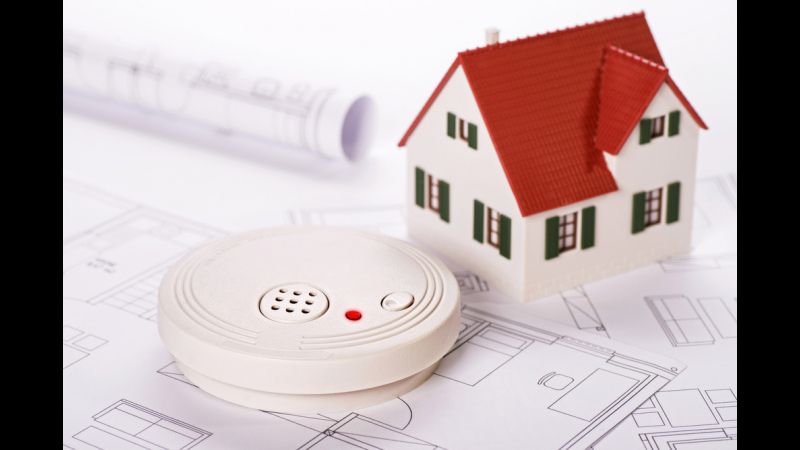Fires do more than just damage our beloved homes and belongings – they destroy lives. It’s easy to think that you will never be affected by a house fire, but a fire can happen to anyone, any time, any where, In fact, in 2015 alone, 365,500 house fires were reported according to the National Fire Protection Association.
When a house fire occurs, you only have two minutes to evacuate your home, and your ability to do so depends on how well you prepared for this kind of emergency. That’s why removing fire hazards in the home and creating a fire emergency plan before a house fire occurs are essential to maintaining your safety as you age in place.
A Step-by-Step Guide to Creating a Fire Emergency Plan
Since those who are 65 and older are twice as likely to be either injured or killed by fires when compared to other age groups, the National Fire Protection Association has identified the following steps to in order to help older adults create a fire emergency plan:
1. Draw your home’s floor plan. Download and print out this sheet from the American Red Cross to get started. Having a visual reminder of the lay of the land will help you better plan for a fire emergency.
2. Plan your escape routes. Use the sheet of your home’s layout and make note of two different ways out of each room. When planning your escape routes, consider your abilities and limitations. Keep necessary items, like glasses, medications, flashlights and a whistle, nearby. If you have limited mobility and use a cane, walker or wheelchair, consider sleeping on the first level of your home so you can evacuate even more quickly.
3. Make sure all doors and windows open easily. While closed doors and windows help slow the spread of smoke and fire, you need to be able to open them quickly if they’re part of your escape route. Should a house fire ever occur, however, close doors as you leave each room to slow the spread of smoke and to give you more time to get to safety.
4. Pick a meeting place outside. The meeting place should be a safe distance from your home, like a neighbor’s mailbox or a nearby lamppost. Even if you live alone, you should still pick a designated place to go once you are outside so your family members and neighbors know where you’ll be. And remember: once you are out of your home, never go back inside for any reason.
5. Ensure your house or building number is clearly visible. If your home is difficult to spot for passersby, install house numbers or paint it on the curb so the address will be more visible and firefighters can find your home quickly.
Plan Ahead For Safety
Once you have your fire emergency plan in place, take the following precautions so you can rest assured that you are fully prepared if a fire ever starts in your home.
1. Install smoke alarms. The smoke alarms installed inside and outside of each bedroom and on every level of the home should be interconnected, meaning that if one alarm goes off, they all do. If you have hearing problems, investing in a strobe alarm or bed shaker that can alert you of a fire could end up saving your life. Once these alarms are installed, check them monthly to make sure that they are working properly and that the batteries are fully charged.
2. Have access to immediate help. Emergency responders need to be contacted at the first sign of a house fire so that they can put it out quickly. When you have a Medical Guardian medical alert device, all you have to do is push a button and our 24/7 monitoring center will do the rest for you–the experienced emergency operator will send firefighters to your home right away.
3. Share the details of your plan with your loved ones. Even if you live alone, your family members, friends, caregivers and neighbors should be aware of your plan so they know you are prepared for this kind of emergency.
4. Practice makes perfect! Practice your fire emergency plan at least twice a year to keep the plan fresh in your mind.
Eliminating Fire Hazards in the Home
While having a fire emergency plan in place is essential to your safety, this is only the first step. Hundreds of thousands of fires occur every year, but by taking these simple steps to remove fire hazards in the home, you’ll lower your risk of being affected by a house fire.
1. Don’t smoke indoors. Keep large, sturdy ashtrays outside, and make sure cigarette butts and ashes are completely out.
2. Place space heaters at least three feet away from anything flammable. Remember to unplug them whenever you leave your home and before going to bed.
3. Stay in the kitchen while cooking. Grease flare-ups and leaving the kitchen while food is being cooked are two of the biggest causes of house fires.
4. Never leave a flame unattended. It doesn’t matter if it’s a small candle or a large fireplace — stay in the room to make sure the flame doesn’t spread.
Fire hazards like these may be lurking in your home without your knowledge, but by proactively remaining on the lookout for them and by practicing your fire emergency plan, you will ensure your safety in the home year-round.

